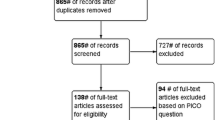Summary
-
▲ NRD 101 is a high molecular weight hyaluronan derivative used in the treatment of osteoarthritis.
-
▲ The benefits of intra-articular hyaluronan are believed to be primarily a consequence of their lubricating and shock-absorbing properties, but it also has anti-inflammatory and analgesic effects.
-
▲ NRD 101 inhibited leucocyte chemotaxis and phagocytosis in guinea-pig polymorphonuclear leucocytes.
-
▲ NRD 101 was also associated with normalisation of joint loading in meniscectomised sheep but did not have a chondrocyte-protective effect.
-
▲ In several clinical trials, intra-articular NRD 101 was associated with improvements in symptoms of osteoarthritis compared with baseline on physician or patient rating scales and produced a significantly higher response rate than a lower molecular weight hyaluronan (Artz®).
-
▲ NRD 101 is well tolerated; approximately 2 to 3% of patients in clinical trials experienced adverse events, most commonly transient, mild to moderate joint pain.
Similar content being viewed by others
References
Tamoto K, Nochi H, Tokumitsu Y. High molecular weight hyaluronic acids inhibit interleukin-1-induced prostaglandin E2 generation and prostaglandin E2-elicited cyclic AMP accumulation in human rheumatoid arthritic synovial cells. Jpn J Rheumatol 1994; 5(3): 227–36
Ghosh P. The role of hyaluronic acid (hyaluronan) in health and disease: interactions with cells, cartilage and components of synovial fluid. Clin Exp Rheumatol 1994 Jan–Feb; 12: 75–82
Strachan RK, Smith P, Gardner DL. Hyaluronate in rheumatology and orthopaedics: is there a role? Ann Rheum Dis 1990 Nov; 49: 949–52
Pelletier J-P, Martel-Pelletier J. The pathophysiology of osteoarthritis and the implication of the use of hyaluronan and hylan as therapeutic agents in viscosupplementation. J Rheumatol 1993 Aug; 20Suppl. 39: 19–24
Peyron JG. Intraarticular hyaluronan injections in the treatment of osteoarthritis: state-of-the-art review. J Rheumatol 1993 Aug; 20Suppl. 39: 10–5
Tamoto K, Tada M, Shimada S, et al. Effects of high-molecular-weight hyaluronates on the functions of guinea pig polymorphonuclear leukocytes. Semin Arthritis Rheum 1993 Jun; 22(6): 4–8
Ghosh P, Read R, Armstrong S, et al. The effects of intraarticular administration of hyaluronan in a model of early osteoarthritis in sheep. I. Gait analysis and radiological and morphological studies. Semin Arthritis Rheum 1993 Jun; 22Suppl. 1: 18–30
Ghosh P, Read R, Numata Y, et al. The effects of intraarticular administration of hyaluronan in a model of early osteoarthritis in sheep. II. Cartilage composition and proteoglycan metabolism. Semin Arthritis Rheum 1993 Jun; 22Suppl. 1: 31–42
Iwata H, Itoh H, Onishi A. The phase I study of high molecular weight sodium hyaluronate (NRD101), a new anti-arthritis agent [in Japanese]. Yakuri to Chiryo 1994 Jun; 22(6): 2755–70
Fraser JRF, Kimpton WG, Pierscionek BK, et al. The kinetics of hyaluronan in normal and acutely inflamed synovial joints: observations with experimental arthritis in sheep. Semin Arthritis Rheum 1993 Jun; 22(6) Suppl 1: 9–17
Yamada N, Uzuki M, Ohnuma E, et al. Comparative study on synovial tissues of rheumatoid arthritis between pre and post treatment of hyaluronan with high molecular weight by the aid of immunohistochemistry [in Japanese]. Ensho 1994 Jul; 14(4): 303–11
Yamamoto M, Takagishi K, Tsukamoto Y, et al. Clinical evaluation of high molecular sodium hyaluronate (NRD 101) on osteoarthritis of the knee [in Japanese]. Yakuri to Chiryo 1993 Mar; 21(3): 891–907
Yamamoto M, Kanbara S, Tsukamoto Y, et al. Dose-range finding study of high molecular weight sodium hyaluronate (NRD101) on osteoarthritis of the knee: a multi-center, late phase II clinical study [in Japanese]. Yakuri to Chiryo 1994 Jun; 22(3): 2771–94
Kurokawa T, Oda H, Mikami Y, et al. Clinical evaluation of high molecular weight sodium hyaluronate (NRD101) on osteoarthritis of the knee: phase III long-term clinical study [in Japanese]. Yakuri to Chiryo 1994 Sep; 22(9): 4007–28
Yamamoto M, Sugawara Y, Tsukamoto Y, et al. Clinical evaluation of high molecular weight sodium hyaluronate (NRD 101) on osteoarthritis of the knee: a phase III comparative clinical study with ARTZ® as a control drug [in Japanese]. Yakuri to Chiryo 1994 Sep; 22(9): 4059–87
Author information
Authors and Affiliations
Rights and permissions
About this article
Cite this article
Fulton, B., Bryson, H.M. NRD 101. Clin. Immunother. 6, 163–168 (1996). https://doi.org/10.1007/BF03259513
Published:
Issue Date:
DOI: https://doi.org/10.1007/BF03259513




